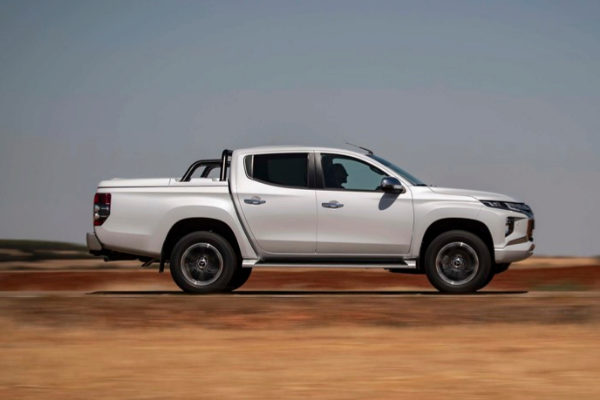- Photo gallery: This is the Mitsubishi L200
The sixth generation of the Mitsubishi pick-up - the L200 - is full of new features: new aesthetics, new engine, chassis and frame improvements, refined interior and electronic aids. After the disappearance of Montero, the L200 has become the off-road of the Japanese brand in Europe and, therefore, addresses the double function of assuming its role of "workhorse" for the toughest rural jobs and also to become the All -road off-road fans on days off.
What most impacts is its new aesthetic with a high front (4 centimeters more than its predecessor) and flat-sturdy and powerful- with LED headlights redistributed in two rows, and large calender chaired by the new institutional 'Dynamic Shield' of the brand . Although the central body is the same (available with three or four doors), the fins and the box are new design, more bulky and aggressive and with large rear pilots. The new shape of the bumpers and stirrups allows to gain in wading capacity (31 degrees front, 23 behind and 45 sideways).
Mitsubishi sells the L200 in 150 countries and is one of its 'best sellers', in hard struggle with models such as the Ford Ranger or the Toyota Hilux, so any novelty has to go far beyond the cosmetic. The beam chassis has been improved with new high strength materials and reinforcements to gain torsional stiffness, as well as the upper body. And the suspensions have oversized springs and dampers in front and with six-leaf springs behind.
In order to comply with the European Euro 6d temp pollution and consumption standards, the 4N1 turbodiesel engine has reduced its displacement from 2.4 to 2.2 liters, gaining 30 kg of weight (it is made of aluminum), improved internal masses and frictions, reducing emissions and keeping the 150 horses with a torque of 400 Nm and great flexibility of use .
It can be coupled to a 6-speed manual gearbox or to the renewed automatic transmission, which goes from 5 to 6 ratios and is a great help in off-road activity. As usual in Mitsubishi "SUVs," all-wheel drive is one of its strengths. Now, the L200 can circulate in any circumstance in four driving wheels, but in addition, its electronic system 'Super Select 4WD-II' (which can be varied up to 100 km / h) offers the possibility of moving from rear to full propulsion or block the central differential And, when the "off road" zone is reached, the 4LLc gearbox can be engaged for all gears and even block the rear differential.
In this gearbox mode, the L200 releases a drive mode selector: earth, snow / mud, sand or stone. Each one adjusts various parameters to the sliding of each wheel to overcome obstacles only by playing with the accelerator. And, in descent, the new HDC system acts on engine and brakes from 2 to 20 km / h.
The agility of the L200 is guaranteed by its dimensions (just over 5 meters), its closed turning radius - the best in its class - of 5.9 meters and its weight (1.895 or 2.035 Kg., Plus up to one ton loading)
For both work and enjoyment, the cabin offers its occupants unexpected comfort for a Pick-Up. It looks like an SUV, with its console with digital display, infotainment, connectivity, good seats and coverings (with soft materials, to minimize bumps), a wing-shaped design dashboard ... and a package of driving aids very complete, to which now the 360º exterior cameras are added (very useful in the steep areas of off-road where the terrain is not visible) and the frontal anti-collision, rear traffic or blind spot systems.
The range of the new Mitsubishi L200 is divided into two: Professional and High. The first goes from 29,250 to 32,600 euros and the second - with more equipment, six new colors and a multitude of optional accessories - from 36,100 to 40,100 euros. The Spanish subsidiary expects to sell 16,000 units this year, half to individuals, gaining market share.
According to the criteria of The Trust Project
Know more- Engine
- Mitsubishi
GalaEL MUNDO and the automotive sector pay tribute to Sergio Piccione
New Audi RS6 Avant: Vitamin Family Saloon
EngineCar sales fall by 31% due to the effect of the new WLTP emission regulations

